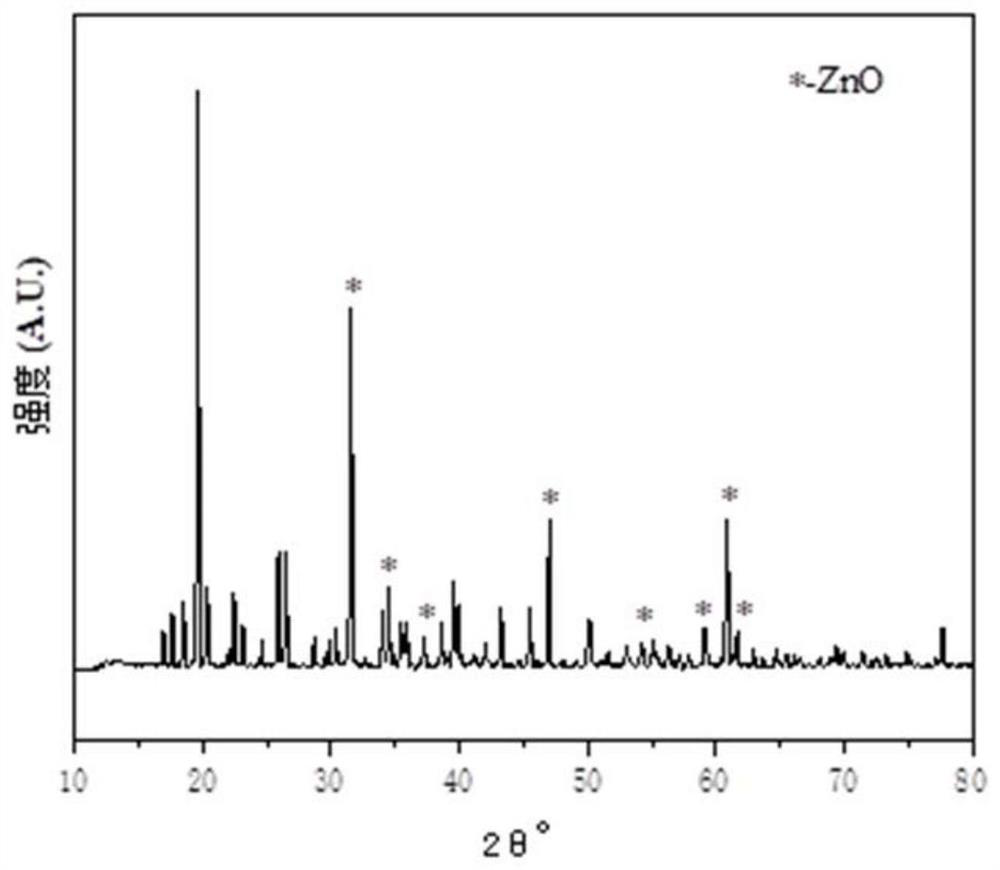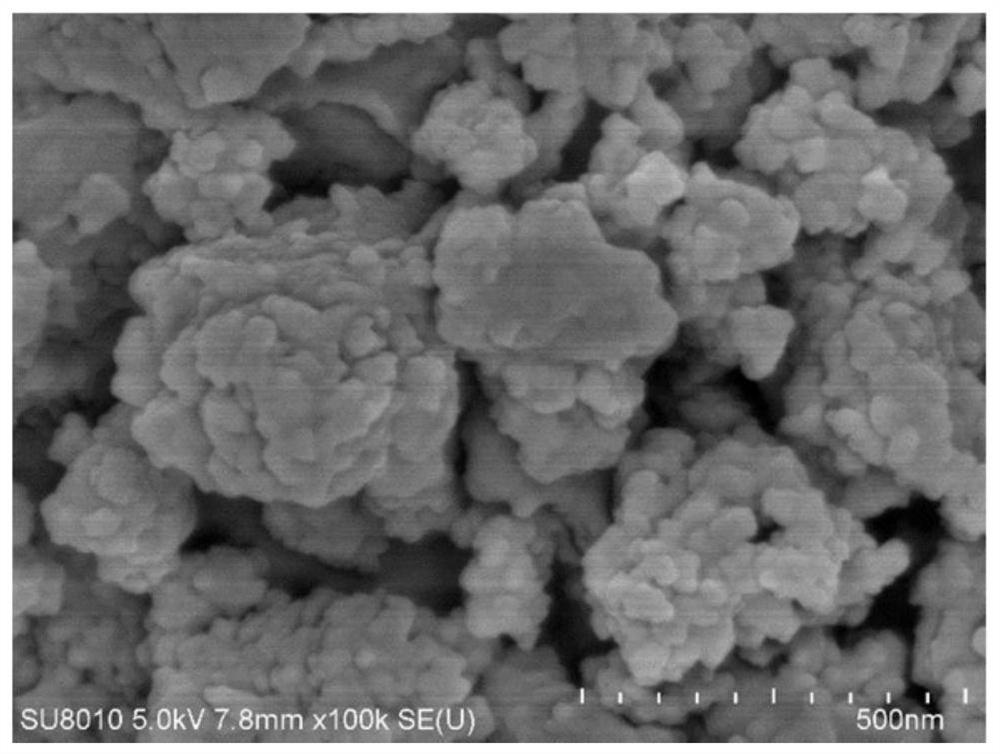Nano-zinc oxide composite material based on bacillus thuringiensis as well as preparation method and application thereof
A technology of nano-zinc oxide and thuringiensis spores, applied in the field of biological materials, can solve the problems of imperfection, vacancies in Bt-ZnONPs yield, and differences in properties, and achieves low cost, no residual toxic reagents, and good dispersibility.
- Summary
- Abstract
- Description
- Claims
- Application Information
AI Technical Summary
Problems solved by technology
Method used
Image
Examples
Embodiment 1
[0031] (1) Preparation of LB liquid medium: Add 1 g of yeast extract (purchased from Sigma, USA, CAS: 8013-01-2) and 2 g of tryptone to 200 mL of 0.9% sodium chloride solution, stir well until dissolved , autoclave sterilization, the sterilization conditions are: 0.15 Mpa, 125 ℃, 30 min, after cooling to room temperature;
[0032] (2) Bt culture: Inoculate the Bt strain (purchased from the China General Microorganism Culture Collection and Management Center, CGMCC 1.7882) into the culture dish containing (1) under aseptic conditions for strain culture. The culture conditions are: Temperature 35°C, 24h, to obtain Bt strains;
[0033] (3) Inoculate the Bt strain in step (2) into the slant culture medium under aseptic conditions, and expand the culture. The incubator conditions are: temperature 37°C, 150 rpm, 24 h, to obtain the Bt seed solution;
[0034] (4) Dilute the Bt seed solution in step (3) by 4 times with 0.9% sodium chloride solution, adjust the pH to 7, and continue c...
Embodiment 2
[0038] (1) Preparation of LB liquid medium: Add 1 g of yeast extract (purchased from Sigma, USA, CAS: 8013-01-2) and 2 g of tryptone to 200 mL of 0.9% sodium chloride solution, stir well until dissolved , autoclave sterilization, the sterilization conditions are: 0.15 Mpa, 125 ℃, 30 min, after cooling to room temperature;
[0039] (2) Bt culture: Inoculate the Bt strain (purchased from the China General Microorganism Culture Collection and Management Center, CGMCC 1.7882) into the culture dish containing (1) under aseptic conditions for strain culture. The culture conditions are: Temperature 35°C, 24 h, to obtain Bt strains;
[0040] (3) Inoculate the Bt strain in step (2) into the slant culture medium under aseptic conditions, and expand the culture. The incubator conditions are: temperature 37°C, 150 rpm, 24 h, to obtain the Bt seed solution;
[0041] (4) Dilute the Bt bacterial solution in step (3) by 4 times with 0.9% sodium chloride solution, adjust the pH to 7, and cont...
Embodiment 3
[0045] (1) Preparation of LB liquid medium: Add 1 g of yeast extract (purchased from Sigma, USA, CAS: 8013-01-2) and 2 g of tryptone to 200 mL of 0.9% sodium chloride solution, stir well until dissolved , autoclave sterilization, the sterilization conditions are: 0.15 Mpa, 125 ℃, 30 min, after cooling to room temperature;
[0046] (2) Bt culture: Inoculate the Bt strain (purchased from the China General Microorganism Culture Collection and Management Center, CGMCC 1.7882) into the culture dish containing (1) under aseptic conditions for strain culture. The culture conditions are: Temperature 35°C, 24 h, to obtain Bt strains;
[0047] (3) Inoculate the Bt strain in step (2) into the slant culture medium under aseptic conditions, and expand the culture. The incubator conditions are: temperature 37°C, 150 rpm, 24 h, to obtain the Bt seed solution;
[0048] (4) Dilute the Bt bacterial solution in step (3) by 4 times with 0.9% sodium chloride solution, adjust the pH to 7, and cont...
PUM
| Property | Measurement | Unit |
|---|---|---|
| The average particle size | aaaaa | aaaaa |
| The average particle size | aaaaa | aaaaa |
| The average particle size | aaaaa | aaaaa |
Abstract
Description
Claims
Application Information
 Login to View More
Login to View More - R&D
- Intellectual Property
- Life Sciences
- Materials
- Tech Scout
- Unparalleled Data Quality
- Higher Quality Content
- 60% Fewer Hallucinations
Browse by: Latest US Patents, China's latest patents, Technical Efficacy Thesaurus, Application Domain, Technology Topic, Popular Technical Reports.
© 2025 PatSnap. All rights reserved.Legal|Privacy policy|Modern Slavery Act Transparency Statement|Sitemap|About US| Contact US: help@patsnap.com



